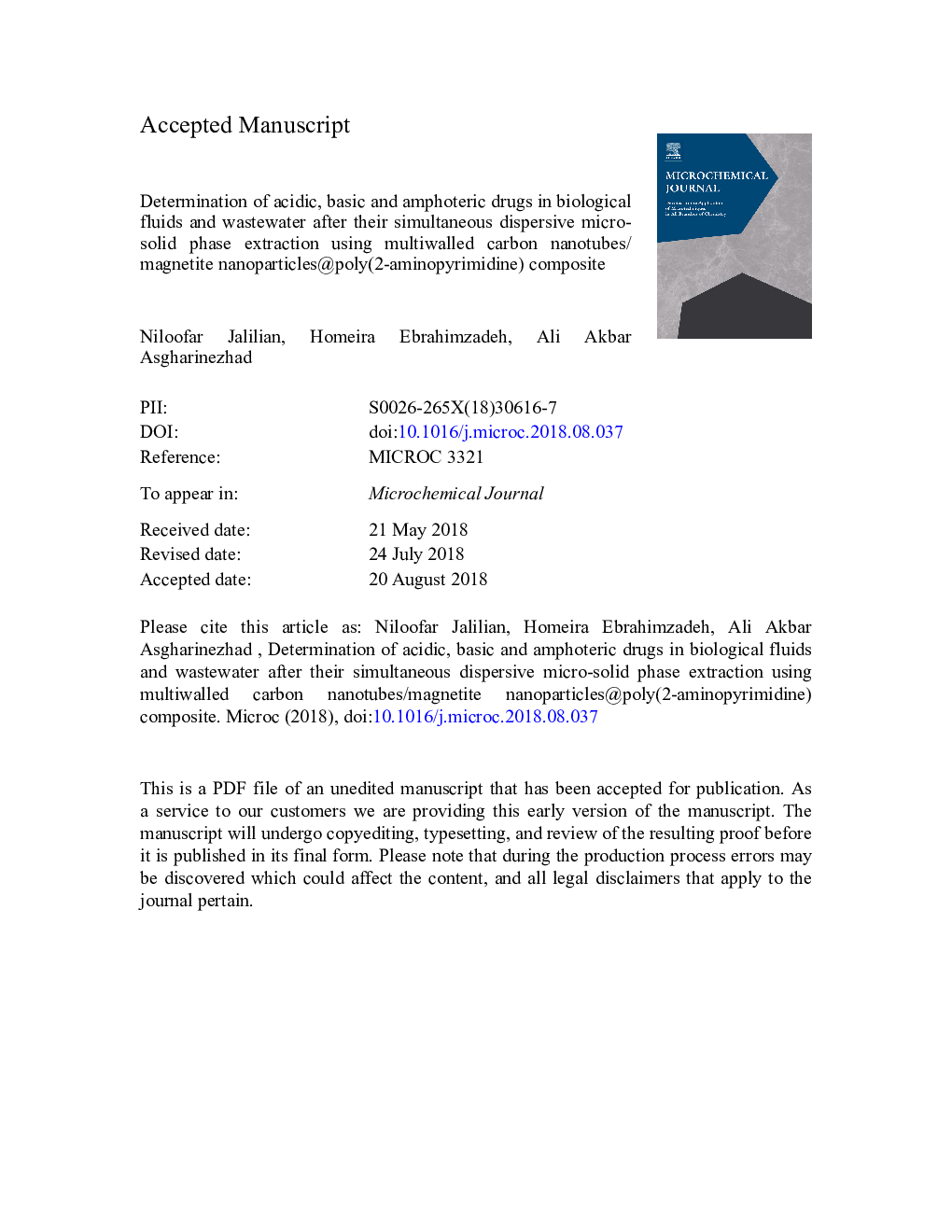| کد مقاله | کد نشریه | سال انتشار | مقاله انگلیسی | نسخه تمام متن |
|---|---|---|---|---|
| 11005763 | 1494851 | 2018 | 45 صفحه PDF | دانلود رایگان |
عنوان انگلیسی مقاله ISI
Determination of acidic, basic and amphoteric drugs in biological fluids and wastewater after their simultaneous dispersive micro-solid phase extraction using multiwalled carbon nanotubes/magnetite nanoparticles@poly(2-aminopyrimidine) composite
ترجمه فارسی عنوان
تعیین مواد اسیدی، اساسی و آمفوتریک در مایعات بیولوژیکی و پساب پس از استخراج فاز مایع جامد پراکنده با استفاده از نانولوله های کربنی چند ضلعی / نانوذرات مگنتیتی @ پلی (2-آمینوپیریمیدین) کامپوزیت
دانلود مقاله + سفارش ترجمه
دانلود مقاله ISI انگلیسی
رایگان برای ایرانیان
کلمات کلیدی
طبقات مختلف مواد مخدر، استخراج همزمان، ادرار، پلاسما و فاضلاب، طراحی کامپوزیت مرکزی، تابع مطلوبیت
موضوعات مرتبط
مهندسی و علوم پایه
شیمی
شیمی آنالیزی یا شیمی تجزیه
چکیده انگلیسی
Determining of acidic, basic and amphiprotic drugs from different samples simultaneously is a remarkable and discussible topic in sample preparation methods. In this work, an easy and fast dispersive micro-solid phase extraction (D-μ-SPE) method was developed using a magnetic multiwalled carbon nanotubes/Fe3O4@poly(2âaminopyrimidine) (MWCNTs/Fe3O4@PAPy) as a viable and efficient sorbent to preconcentrate and determine five model analytes in three different classes (nortriptyline, cetirizine, naproxen, diclofenac and ibuprofen). The nanosorbent was characterized by diverse characterization techniques. After the extraction step, HPLC-photo diode array detection (HPLC-DAD) was employed to quantify the model analytes. The effects of various parameters on the dispersive magnetic solid phase extraction method were explored thoroughly via design of experiment and desirability function. The highest extraction performance was obtained under the conditions of: a sample pH of 2, a sorbent amount of 8â¯mg, a sorption time of 5â¯min, a salt concentration of 20% w/v in the sample solution, 120â¯Î¼L 0.01â¯molâ¯Lâ1 HCl in acetonitrile as an eluent, and an elution time of 2â¯min. By employing the optimum conditions detection limits and linear dynamic ranges were obtained in the range of 0.07-3.5â¯Î¼gâ¯Lâ1 and 0.25-1500â¯Î¼gâ¯Lâ1, respectively. The relative standard deviations (nâ¯=â¯5) were between 1.4% and 10.5%. Eventually, this method was simply applied for determination and extraction of target analytes in different samples.
ناشر
Database: Elsevier - ScienceDirect (ساینس دایرکت)
Journal: Microchemical Journal - Volume 143, December 2018, Pages 337-349
Journal: Microchemical Journal - Volume 143, December 2018, Pages 337-349
نویسندگان
Niloofar Jalilian, Homeira Ebrahimzadeh, Ali Akbar Asgharinezhad,
